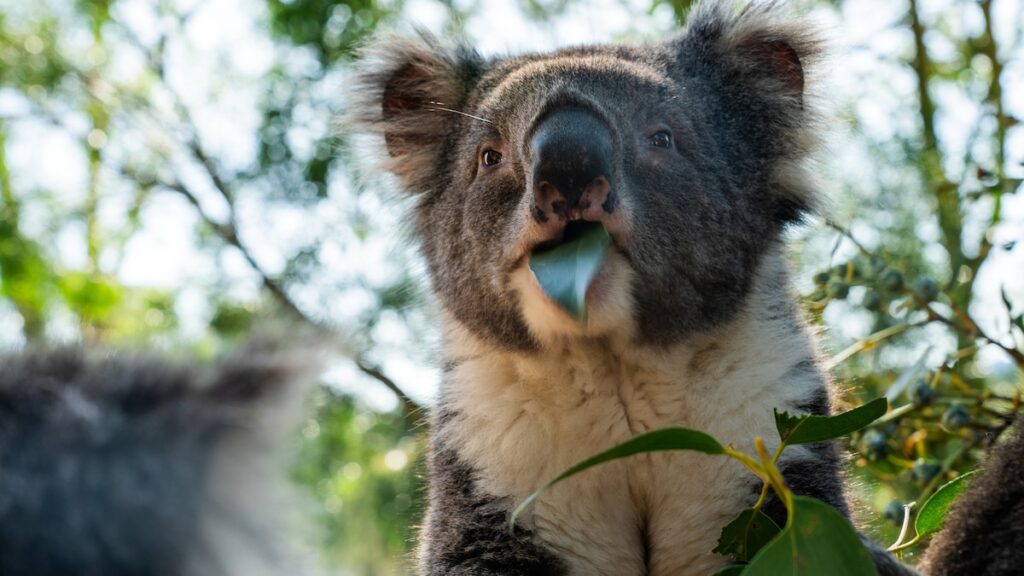The Fascinating World of Animal Fecal Recycling and Its Survival Significance
Unusual Feeding Habits in the Animal Kingdom
In the realm of wildlife, some species have developed extraordinary strategies to ensure their survival, especially during their early developmental stages. One such remarkable behavior involves the consumption and recycling of feces, a process vital for the health and growth of certain animals. While it might sound unappealing, this practice plays a crucial role in their life cycle and ecological balance.
The Unique Case of Koala Joeys and Their First Meals
When koala mothers give birth, their tiny offspring are less than the size of a jellybean, resembling a gummy bear more than a miniature koala. These fragile newborns are born blind, hairless, and entirely dependent on their mothers. They make an immediate journey from the birth canal into their mother’s pouch, where they will stay for approximately seven months, nursing and developing.
Unlike adult koalas, which subsist solely on eucalyptus leaves-plants that contain toxins harmful to most animals-joeys cannot digest these leaves initially. To overcome this, mother koalas produce a special type of feces known as “pap,” which is distinct from their regular droppings. This nutrient-rich substance is essential for the joey’s development, as it provides vital microbes that help break down the toxic eucalyptus fibers and detoxify harmful compounds.
The Role of Pap in Digestive Development
According to Sally Bornbusch, a researcher affiliated with the Smithsonian’s National Zoo and Conservation Biology Institute, pap is a different form of feces, specifically produced in the cecum-a section of the digestive system that starts at the large intestine. Its softer, paste-like consistency contrasts with the pellet-shaped feces of adult koalas. This substance is passed from the mother through the cloaca, a common opening for the urinary, reproductive, and digestive tracts, as captured in recent National Geographic footage from the series Underdogs.
Joeys instinctively recognize when they are ready to start consuming pap, usually around five to six months of age, once they are more developed within the pouch. They will gently stimulate the mother’s cloaca to obtain this vital nourishment, which supplies the necessary microbes for digesting eucalyptus leaves later in life. Although they begin experimenting with leaf-eating at about the same age, they continue to nurse until they reach approximately one year old.
Broader Ecological Significance of Fecal Recycling
The practice of consuming feces is not exclusive to koalas. Many other animals, such as rabbits, guinea pigs, capybaras, and naked mole rats, also produce and consume cecotropes-specialized fecal pellets that contain nutrients missed during the initial digestion. These animals often rely on this process to maintain health; failure to do so can lead to severe nutritional deficiencies or death, highlighting its importance in their natural ecology.
Research published in 2024 by Bornbusch and Erin Kendrick in the journal Animal Behaviour reveals that over 150 species, including juvenile ostriches, iguanas, and African elephants, utilize their own feces at some point for dietary reasons. This behavior underscores a widespread evolutionary strategy for maximizing nutrient absorption and survival.
Fecal Consumption in Adult Animals and Its Ecological Benefits
Beyond juveniles, certain adult animals also partake in fecal consumption. For example, western lowland gorillas, leopard tortoises, and dung beetles regularly ingest feces, which provides essential nutrients and aids in waste management. Dung beetles, in particular, are renowned for their role in recycling animal waste; they use feces not only as a food source but also to cultivate underground nests, which helps control parasite populations and promotes soil health.
Interestingly, some species, like the dung beetle, have evolved to specialize in consuming feces from specific animals, which can influence ecosystem dynamics and biodiversity. Their activity helps reduce the spread of disease and maintains the balance of various populations within their habitats.
The Ecological and Conservation Implications
Understanding these behaviors offers insight into the complex relationships animals have with their environment. It also emphasizes the importance of preserving diverse ecosystems, where such natural recycling processes contribute to ecological stability. As climate change and habitat destruction threaten many species, recognizing the significance of behaviors like fecal recycling can inform conservation strategies.
Upcoming Documentary Spotlight
The intriguing world of animal fecal habits will be explored in the upcoming documentary Underdogs, premiering on National Geographic on June 15th, with subsequent streaming on Disney+ and Hulu. This series aims to shed light on the lesser-known survival tactics of animals, highlighting their adaptability and resilience in the face of environmental challenges.
Note: The information provided reflects current scientific understanding and recent research developments in animal ecology and behavior.

